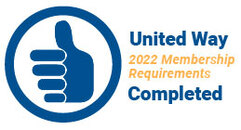|
Last time we began our discussion on human trafficking and its frequency. There are several myths and misconceptions surrounding this issue. (These are compiled from a variety of sources: www.dhs.gov/blue-campaign; www.acf.hhs.gov; unitedway.org; https://blog.theexodusroad.com)
Many people believe that the majority of human trafficking is enacted by strangers. In reality, only nine percent of trafficking is perpetrated by a stranger. Half of victims are trafficked by an immediate family member or family friend, twenty-seven percent by a boyfriend, and fourteen percent by their employer. Ninety percent of trafficked persons had a relationship with their trafficker before being trafficked. Family members who were trafficked themselves often traffic other family members, viewing trafficking as normal. Many traffickers groom their victims for a period of time before coercing them into trafficking. They use what is missing in a person’s life to recruit them. They offer false job offers, empty promises to take care of them, or necessities like shelter, food, and clothing. This makes it difficult for the victim to recognize or resist the coercion because of all the trafficker has done for them. There is a misconception that all trafficking is related to the sex trade. But the International Labor Organization estimates that in 2012, there were more than four times as many children trafficked for forced labor than for sex. Trafficking is referred to as modern day slavery. Although the sex industry does use trafficking to recruit, many other legitimate and illegitimate industries utilize trafficking to obtain workers. These include restaurants, health and beauty, hospitality, construction, forestry, domestic work, and agriculture. Even major worldwide industries may partner with companies that utilizing trafficking. The website Knowthechain.org ranks corporations on their policies on trafficking and other social issues. Hollywood has popularized the notion that trafficked individuals are locked in basements in third world countries. Although traffickers may use confinement to hold their victims, most traffickers use psychological means such as intimidation, humiliation, defrauding, manipulating, or threatening victims to coerce them to continue. Many victims are afraid to seek help fearing retribution to themselves or family members. Another misconception is that trafficking must involve transporting victims across state or national borders. Trafficking can occur without the victim leaving their neighborhood or home. Human smuggling, however, is defined as moving a person across a country’s border without that person’s consent in violation of immigration laws. But an individual doesn’t need to be smuggled to be a victim of trafficking. Another myth about trafficking is that all traffickers are men. According to the United Nations Office on Drugs and Crime, seventy-two percent of convicted traffickers are men. The females comprising the other twenty-eight percent were often victims themselves and viewed trafficking as an escape from being trafficked themselves. If you suspect someone is being trafficked or notice suspicious activity, call the Indiana Protection for Abused and Trafficked Humans hot line: 888-373-7888, the ICE tipline: 866-347-2423, or text HELP to BeFree (233733). Next time we will discuss what an individual can do to stop trafficking.
0 Comments
Your comment will be posted after it is approved.
Leave a Reply. |
AuthorLynn Saylor is the AmeriCorps member working with the United Against Opioid Abuse Initiative alongside the White County United Way. She is a major facilitator of the United Council on Opioids serving White County and a regular contributor to local media. Archives
October 2020
Categories
All
|

 RSS Feed
RSS Feed
